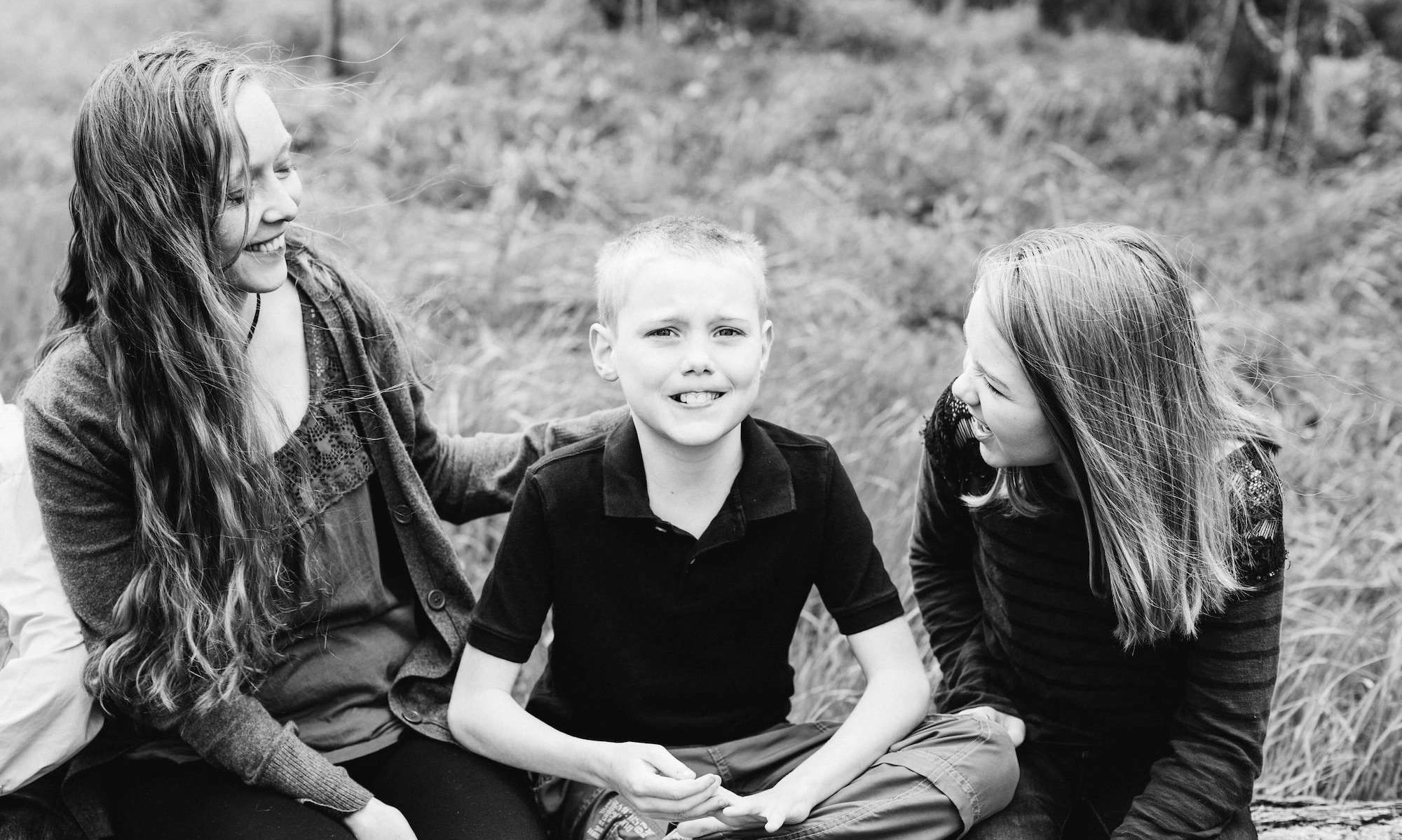
“Following his lead” I shook my head as I stared at the page in front of me. I was sitting in a parent training class at Jackson’s school desperately looking for a new way to progress with Jackson at home. I had thought, “I’m a great parent and a natural teacher, I can do this.” But after months of frustrating non-interactions, I realized I needed a new strategy. So here I was, hoping to gain some new secret insights on how to convince Jackson that words are valuable for getting what you want, and interacting with your family is way more fun than flipping around your sister’s matching Valentine’s socks.
Hmm…”Following his lead” sounded too simplistic to be what we needed, but it got me thinking…Trailing a four year old all around the house is far different than being absorbed and thrilled with every miniscule achievement your baby makes. We’ve enjoyed many an evening being entertained by the antics and accomplishments of our babies. But once they pass that oh-so-adorable 24-month mark and no longer live to see mama smile, it gets harder and harder to continue to be thrilled over every little thing that captures their attention. We get so busy, we often don’t even notice. All the more when our little one has no desire to please, entertain, or engage in what we consider “normal” play.
Follow his lead. The concept was simple enough, I decided to give it a go. When I started following Jackson’s lead, I found a goldmine. I learned what really fascinated him, what was motivating to him, what frustrated him, and ultimately how to engage him, get his attention, and teach him language.
I had to shove aside the natural directive “teacher mom” and put on my “explorer” hat. If Jackson looked up at the blackbird screeching overhead, I’d say, “Bird!” “Noisy bird!” If he ran toward the door and tried to open it, I’d say, “Outside? You want to go outside?” Lots of physical activities were and still are some of the best motivators. “Run, run, RUN!!”
I realized I had to invite myself into Jackson’s play world. If he found running up and down a ramp to be hillarious, then doggone it, I would too! “Here comes the tickle worm!” and “I’m gonna get you!” usually brought an automatic grin. Then I knew I was in. We connected in his world.

Aside from the getting sick of playing the same two games over and over, the challenge comes when the things that occupies the majority of his time and attention are not “normal” play. Like Jackson’s obsession with flipping flexible objects. What do I do with that? How do I break into that kind of closed, absorbed play? I started by taking turns. I worked on “my turn.” I’d pat my chest, and say “My turn,” taking the ribbons he was flipping and flipping them the same way. Then I’d show him how to request “My turn” by patting his chest. He wasn’t thrilled with this at first, but with applause and micro-second turn taking on my part, he got used to the idea.
We progress because we’re building and expanding on what is fascinating and motivating to him. Now we can shake ribbons up high, on our heads, or in a basket, we can “freeze” or “go.” Gradually I’m bending my “box” of “normal play” to include some of Jackson’s quirkier preferences like painting with two matching pine branches or drumming on the congas with his hands or a pair of garden gloves (taking turns copying a rhythm).
And some of Jackson’s favorite stimming activities just don’t seem to be super productive or are not able to be expanded upon. So Jackson’s learning to put aside his matching objects for a while to engage in other kinds of play. So when we’re putting a Nemo puzzle together, he’ll occasionally grab two pieces and start to stim (which means flipping the pieces against the edge of the table, which also means every puzzle piece has a serious bend in it). I’ll remove the second piece and redirect his attention to putting the piece in place. This involves another strategy that has helped him stay on task: controlling access. This means I’ll give him only one puzzle piece at a time. When I dump all the pieces out at a time, it’s an invitation for overload, and he almost immediately begins to stim.
Controlling access also provides motivation to communicate wants or needs. Once I realized how powerful this simple strategy is, all food was moved to high cupboards and motivating toys to the top shelves in his bedroom. He has to ask, and he will if he is not allowed to simply help himself.
So…following his lead IS really simple, time consuming, but simple. And so rewarding. I feel like we bonded with lots of connecting on his level, in his world, and now we can cross the bridge to learning new things. Plus, I’m armed with new ammo…I know what motivates him!

Sara,
Thank you for sharing this. Your words touch my heart and motivate me to reconsider my busyness.
May you continue to reach into Jackson world with your love. May you have enough grace and strength to you today.
I know a little bit of what you mean about “controlling access” and not overloading with too many directives or comments. I have a client I work with that is fairly high-functioning, but is easily distracted and confused. For example, if we’re trying to get out the door, I have to limit the reminders/steps to one at a time, or he will get distracted or “cycle,” and I have to start over again.
And it’s probably easier because he’s closer to my age, but a lot of our successful interaction is based on “reading” him constantly to see what approach is working or not, what makes him “click.”